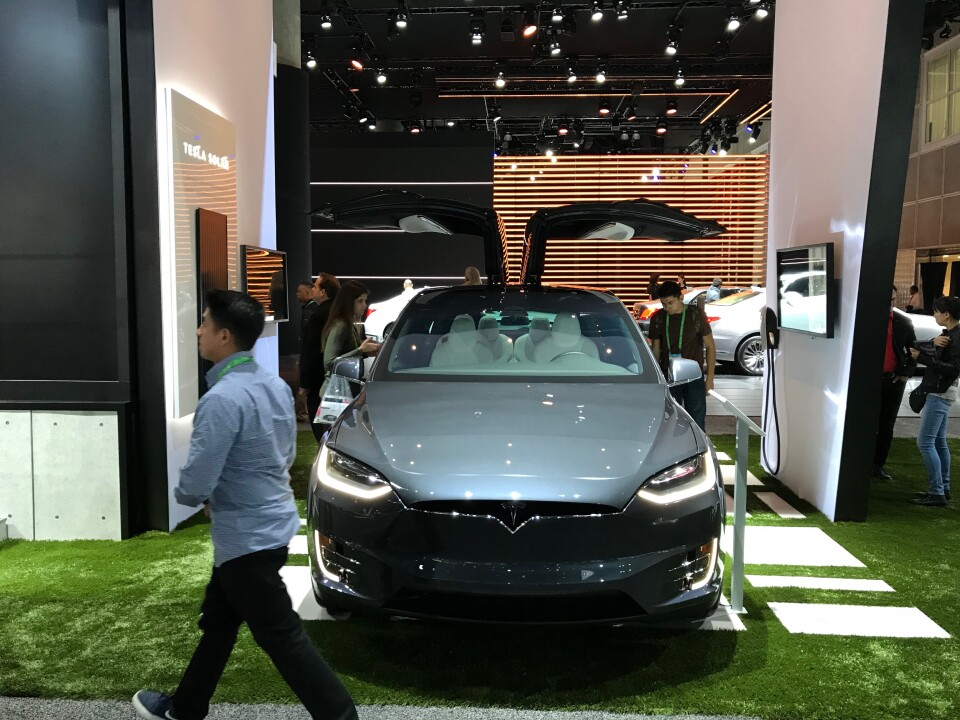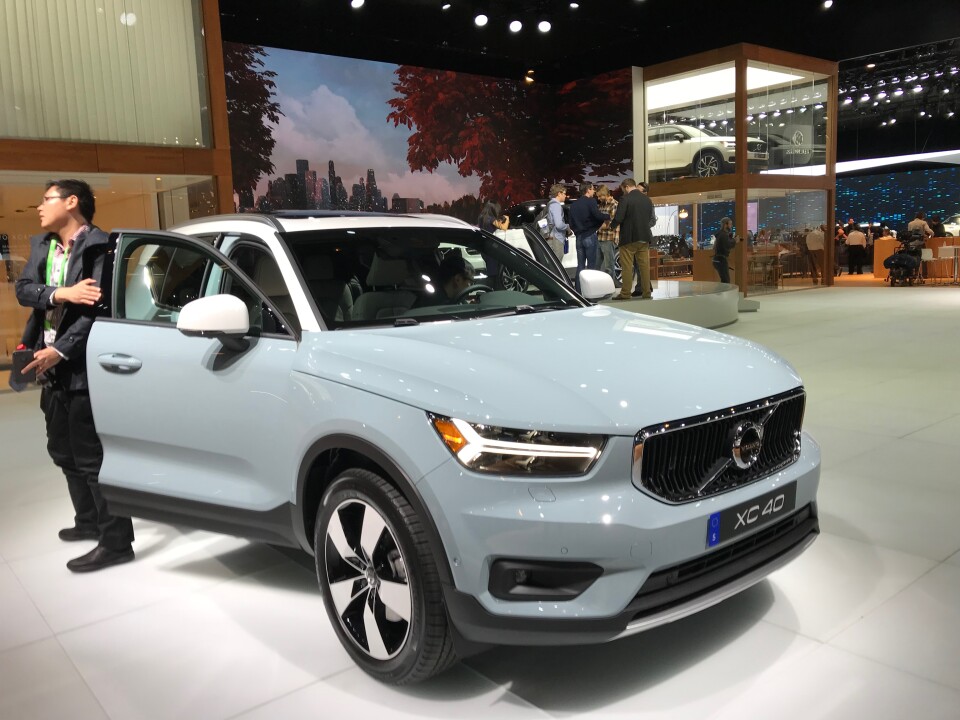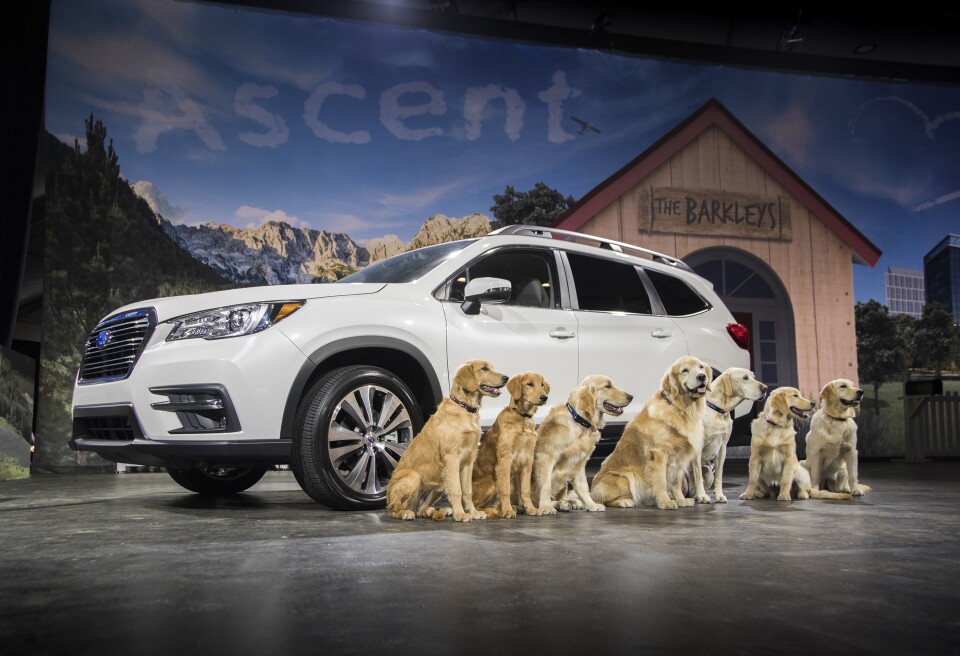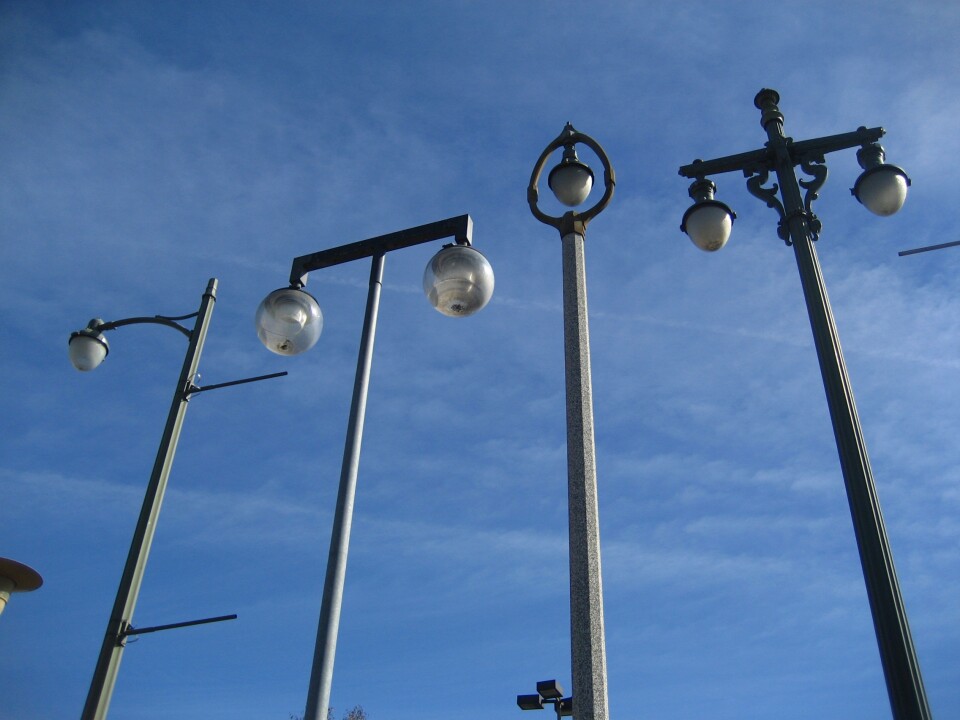The LA Auto Show is now open to the public and here's what you need to know, what the new tax code could mean for Californians, whatever happened to 'Vermonica'?
State of Affairs: Conservatives condemn Steinle verdict, Assembly spotlights harassment
Today on State of Affairs:
- It was a controversial acquittal in San Francisco, as Jose Ines Garcia Zarate, the undocumented man charged with the shooting death of Kate Steinle, was convicted on just one lesser charge: felon in possession of a gun. Republican response to the verdict has been heated, with President Trump taking the lead:
A disgraceful verdict in the Kate Steinle case! No wonder the people of our Country are so angry with Illegal Immigration.
— Donald J. Trump (@realDonaldTrump) December 1, 2017
- Democratic leader Nancy Pelosi calls on embattled Congressman John Conyers to resign after several accusations of sexual misconduct.
- One reporter says jaws dropped in the Capitol on Tuesday, as chief administrator Debra Gravert tells a committee on sexual harassment that the Assembly does not, in fact, track harassment complaints. "We only track investigations," she said.
Highlights
The verdict just came down and maybe some people don't want to jump in to try and politicize this, but it's going to happen, right? Eventually, this is going to be used somehow for some kind of political gain.
Scott Shafer: Trump is already using it. For California, we've already — in many ways — dealt with this sort of issue a long time ago, with Prop 187 back in 1994, and the repercussions of that. There was a PPIC poll out today that showed 86 percent of Californians support a path to citizenship for undocumented immigrants, assuming they don't break the law. I don't see it playing out in a big way. It could affect some races at the margins, though.
No campaign ads, Ben? At some point in 2018, I can't imagine not seeing some kind of television ad with this verdict being the centerpiece.
Ben Adler: I think it's certainly likely that we'll see it on a national scale or in other races, much in the way that Republicans tried to tie that congressional candidate in the Atlanta suburbs to Nancy Pelosi, even though that candidate was running much more to the center than Pelosi. Yet that succeeded.
There are always efforts nationally to tie San Francisco liberal politics to candidates running in other parts of the country. Whether we see those ads in California? That's harder to say.
Guests:
- Scott Shafer, senior editor for KQED's California Politics and Government Desk
- Ben Adler, capitol bureau chief for Capitol Public Radio
Press the blue play button to hear more about the potential political fallout from the Steinle verdict.
Cruising through the 2017 LA Auto Show
If you like SUVs and crossovers, the 2017 LA Auto Show is the place for you.
This year's annual car confab is a cornucopia of utility vehicles in all shapes and sizes from nearly every manufacturer.
Highlights
Tesla: Tesla makes a rare auto show appearance this year to demonstrate its complete sustainability system. The display includes a garage-like structure equipped with a Tesla Solar Roof that generates electricity. That electricity is then stored in a Tesla Power Wall that uses it to power things inside a home and recharge a Tesla vehicle.

Jeep Wrangler: Jeep is calling its 2018 update of the Wrangler the most capable SUV, ever. It’s also the most modern, adding creature comforts like heated front seats and a heated steering wheel, as well as advanced in-cabin technology, including pinch-and-zoom touchscreens and more than 75 available safety and security features.

The new Wrangler can be powered with either a 3.6-liter V6 or a new 2-liter turbocharged four-cylinder and—eventually—as a diesel or hybrid.
Available: Early 2018
Starting price: Not yet announced
Toyota FT-AC concept: The Future Toyota Adventure Concept is squarely aimed at drivers who not only enjoy the great outdoors but like to document their experiences. Cameras mounted in the side mirrors can record the fun and, using the car’s built-in Wi-Fi, upload footage to the cloud where it can it accessed, edited and posted with a mobile device. LED lights on the rear-facing roof rack can be controlled with a smart phone.

Available: Not applicable
Starting price: Not applicable
Hyundai Kona: An all-new small compact crossover, the Kona targets the young, active and urban with its playful profile and ample tech.

Its center touchscreen is tablet-like. Available tech upgrades include 4G Wi-Fi, active safety features such as blind-spot monitoring and rear cross-traffic alerts, as well as Android Auto and Apple CarPlay. An electric version will be available in 2019.
Available: Early 2018
Starting price: Not yet announced
Volvo XC40: New for the 2019 model year, the XC40 is Volvo’s smallest crossover, but it imports a lot of the safety features of its larger models: a 9-inch touchscreen, Apple CarPlay and Android Auto, as well as active safety features like lane-keep assist as standard features.

Available: Early 2018
Starting price: $35,200
Subaru Ascent: The largest ever vehicle from Subaru has three rows that can seat up to eight passengers, depending on whether the second row has captain’s chairs or a bench seat.

The all-wheel drive Ascent is powered with a new 2.4-liter engine mated with a continuously variable transmission. Designed for active lifestyles, the Ascent can tow up to 5,000 pounds and can travel more than 500 miles on a single tank of gas.
Available: Early summer 2018
Starting price: Not yet announced
To here the entire rundown of Take Two's trip to the LA Auto show, please click on the blue player above
No Place Like LA: What death taught Vivienne about life in Los Angeles
NO PLACE LIKE LA IS OUR NEW SERIES THAT ASKS LA TRANSPLANTS AND IMMIGRANTS: "WHEN WAS THE MOMENT YOU FELT THAT LOS ANGELES WAS TRULY HOME?"
THIS IS THE STORY OF Vivienne Elliott FROM San Pedro.
I lived in Northern California before I moved to Southern California.
I made sure that the company that I worked for agreed that I could move back to Northern California – San Francisco – in 18 months. I couldn't imagine living in Los Angeles.
It was flat -- I couldn't understand where one community started and one community stopped.
But I had a really dear friend that I worked with: Fred.
He found me a place to live in Pasadena.
What I didn't know at the time, was that if it's not within a six block radius on a weekend in LA, you don't do it.
I said to him, "Let's drive here! Let's drive there! Let's go here!"
He was the first person to call me Vivianna. He said to me, "Vivianna, we're not going anywhere!"
Fred was the first person to take me to Mariachi [Plaza], and take me to a little restaurant called La Serenata De Garibaldi before anybody really knew that it was going to become as famous and wonderful as it did.
I was here for about a year when Fred got sick.
He didn't want to know what was wrong with him. There was diabetes in his family and I had hoped it was diabetes, but in my heart I had a feeling that he might have AIDS.
Not only did the results come back positive for HIV, but it came back positive for AIDS.
This was 1993, when people were dying daily, and I kind of became his caregiver because he was uncomfortable and afraid to tell his family what was really going on. There's a special place in heaven for people with AIDS, and there's a special place in hell for people who don't help them.
When we had the Northridge earthquake, I called him that morning and I said to him, "Fred, are you okay?"
He said to me, "Why, what happened?"
He wasn't making the connections anymore.
And so I drove to his house and drove him to a hospital in Pasadena.
Fred didn't have any sort of living will, he had not made a trust. He had not done any of those things. He was only 33 years old.
Hospice told me and his sister that he had only four weeks to live, and his mother at that time made a decision that she wanted her son to die at home.
February the 13th was the exact day when hospice said he would die.
What was so amazing about his funeral: I would say all the family members that attended, and all of his friends were mostly Latino, so for me, it was a very different kind of experience.
But what was more amazing to me was the cemetery itself. People had placed pictures on gravestones, and it was that first year that I really came to learn about the Day of the Dead and what that meant to Los Angeles -- as opposed to other parts of California.
In that moment of seeing that following November's Day of the Dead, it sent a message to me that life and death were celebrated differently here in Los Angeles.
It spoke to me in a way that said: I didn't need to go back to San Francisco anymore. I needed to stop asking about that.
There is a community here. There's the larger community – the spirit of what makes Los Angeles so very different than other places.
I was home.
TELL US YOUR OWN STORY, TOO. IF YOU'RE A TRANSPLANT OR IMMIGRANT, WHAT WAS THE MOMENT WHERE YOU THOUGHT TO YOURSELF, "L.A. FEELS LIKE HOME, NOW?"
Senate on verge of tax re-write with huge implications for Californians
After much back and forth, it appears now that the Senate is close to pushing through a massive re-write of the tax bill. After hours and hours of negotiations and deal-making, leading Senate Republicans say they have enough votes to get the job done.
Much of what is in the bill currently has huge implications for Californians. The biggest change, being the end of the state and local tax deduction, which gives people a way to reduce their overall tax bill by deducting the income taxes they pay to the state, and the local property taxes they pay on their homes -- deductions that can really add up in high-tax states like California.
About a third of Californians use the deduction, taking an average $18,000 off their taxes. So if the Senate does vote to kill it, that could substantially increase taxes for many people.
"This enormous thing is happening in Washington, D.C. and I just don't think that Californians really know what an enormous effect it would have on our state," said Kate Pratt, a tax lawyer at Loyola Law School.
KPCC business reporter David Wagner and Health reporter Michelle Faust joined Take Two's A Martinez to break down all the effects of the current plan on the table.
To listen to that conversation, please click on the blue player above.
What the tax plan could mean for post-graduate students
Many post-graduate students, especially those in PhD programs, receive tuition waivers in exchange for teaching or research positions on campus. The Senate plan under debate would preserve those tuition waivers, but the House bill that passed earlier in the week taxes them as income, putting an extra burden on students.
It's now unclear how this will be reconciled once both pieces of legislation are voted on. Take Two sat down with Jane Panangaden, a PhD student in mathematics and a campus leader at Caltech, to talk about the possible implications for graduate students.
"The term 'student' is misleading -- we are really workers," said Panangaden. "Most of the time, we are teaching classes, grading papers, working in labs."
Many PhD level students are older and have families, and some may be forced to drop out if the tax plan passes. Panangaden is originally from Canada, so she is considering finishing up her degree at her home country.
"We are really pushing for innovation here, and we do so relatively cheaply," says Panangaden. "We deserve to be able to afford rent and food."
Taxing on tuition waivers could discourage people from entering academia, especially in the STEM fields.
"Already, we are seeing people in computer science going into industry, so this will absolutely have an impact on people considering academia," says Panangaden.
Click on the blue media player above for the full interview
How LA's original lamppost art installation suddenly disappeared
You probably know Chris Burden's "Urban Lights" installation — an iconic part of the L.A. landscape since 2008. It's the one that sits right outside LACMA, composed of 202 restored street lamps.
But did you know that it is not the first art installation of its kind? Before "Urban Lights," there was "Vermonica."
As Kim Cooper, co-founder of bus tour company Esotouric explained, "Vermonica" was meant to bring some history and beauty to an otherwise drab setting: a strip mall parking lot.
"The artist called it an 'urban candelabra.' I mean, it's one thing to see one or two of these historic streetlights in the course of your daily commute; it's another thing to see a collection from all over Los Angeles brought together for aesthetic and illumination purposes."

Hiding in plain sight, the 25-lamp installation sat in a strip mall parking lot at the intersection between Vermont and Santa Monica. (Thus, its name: Vermonica). It featured lamps dating back to 1925, representing seven decades of the city's Bureau of Street Lighting. Esotouric's Richard Schave told Take Two, it had been a long time in the making:
"Sheila Klein, the artist, had the kernel of this idea in her mind for many years before 1993 and its installation at the parking lot at Santa Monica and Vermont. But in the immediate aftermath of the riots, she was in the parking lot looking at the burned out shells of the shops there and she said to herself, 'This is the location.'"
Galvanized by the 1992 riots, Klein wanted to put something together to help the community heal. First, she secured some funding from the department of cultural affairs. Next, she convinced the property owner of the mini-shopping center to let her use the concrete median in the parking lot for the installation, a sort of platform for the lights.
The property owner also agreed to foot the electricity bill. Finally, Klein recruited volunteers to help with the installation when she attended a Bureau of Street Lighting meeting one morning to plead her case. To her surprise, many of the bureau's staffers volunteered their time.
Originally, it was meant to be up for almost a year, but it remained there for almost a quarter of a century. Until last week.
"It's gone. The entire row of 25 historical street lights have been standing there since May 5th, 1993. A year and a day after the conclusion of the Rodney King riots, they are simply removed. There's a row of concrete and a little bit of grass where they were."

With no notice to the artist or the public, the installation was removed, leaving local residents and fans of the lights surprised.
The lights have been moved to a new location in front of the Bureau of Street Lighting office on Santa Monica Blvd., just two blocks from its original location. The configuration is slightly different, but the 25 light posts are still all in one place.
In a statement to Esotouric, artist Sheila Klein said this of the installation's move: "This is not my piece and it is no longer Vermonica."
The Bureau told the LA Times the move was not intended to be permanent. The strip mall property manager needed the lamps removed for a parking lot redesign or some type of construction. In the meantime, the Bureau said, the Department of Cultural Affairs is said to be contacting Klein about the future of the installation.
So, there's still hope for the lights' return. But until then, Cooper is encouraging Angelenos to keep their eyes open for other hidden gems:
"I hope it gets people to open their eyes and go out and look for wonderful things in their communities. There are a lot of Vermonicas out there and we need to identify them and take care of them."




